6. Saturday Night and Sunday Morning (1960, Karel Reisz)
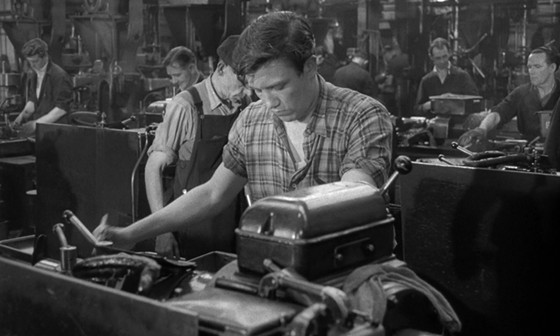
After World War II, the changes that swept the globe in the wake of that conflict began to show up on the screens of the world. Some countries, mostly the ones on the losing side, such as Italy, changed rapidly. The victors seemed to take a bit longer (and, of course, Hollywood was dead last, waiting until the late 1960s).
The film world of Great Britain didn’t seem to start catching on until the end of the 1950s and was largely pushed in this direction by a group of plays and novels that started appearing which portrayed the nation as far from the genteel, stiff-upper-lips, high class group of people too many films, plays and novels had offered over the years.
The seminal work in all of this was John Osborne’s 1956 play Look Back in Anger and the 1959 film made from it. Also that year was another important work, Room at the Top, from John Braine’s 1957 novel.
In all honesty, though, these works and others in the early wave, had a very theatrical and literary quality to them. This is not a bad thing, necessarily, but the feeling of life as it was really lived seemed to be missing a bit. Then came the next wave in this “angry young man” school of film making and these films looked to be a bit more on the nose.
The one that helped to break through (along with that same year’s A Taste of Honey) was Saturday Night and Sunday Morning. Though it, too, was based on a novel (and Taste on a play), the dramatic action was worked out in cinematic terms.
Oddly enough, it was adapted by the novel’s author, Allan Stillitoe. The director was Karel Reisz (British, despite the name), who had been working in the documentary field until that time and who was a close compatriot of fellow film makers Tony Richardson (the director of the film version of Taste) and film critic/historian turned film maker Lindsey Anderson.
The story was set, as most of the films in this wave were, in the grimy industrial north of England (and if these films don’t collective show a true picture of that part of the world, then they owe the north of England a big apology).
The main character is Arthur (stage actor Albert Finney, who had made his film debut that same year in another important work, The Entertainer). Arthur is decidedly not one of those old fashioned type of heroes found in earlier works wherein he is natively brilliant, articulate, and/or talented and seeking a way out of his environment. No, Arthur, who very much works at a factory job that could charitably be described at “rote”, is very much of a piece with his surroundings.
This is not to say that he likes the gritty life he leads in the dungeon like factory or the downscale home he shares with his family (yes, he still lives at home). However, it’s a bit doubtful he would like much of any other kind of life, either. He goes through each weekday counting the pieces he manufactures until the day and week are over and then goes out to have a big time on, yes, Saturday night and into Sunday morning.
Just lately, around the time of the start of the film’s action, he’s been relieving his boredom to an even greater degree by fooling around with the rather randy wife (Rachel Roberts in a fine performance) of a co-worker. Just as he meets a nice girl (Shirley Anne Field), who might make a difference in his life, the other woman informs him that she’s pregnant, which is not music to his ears. (The film was groundbreaking in tackling the subject of abortion, then quite illegal in England.)
Though the main currents of the plot are worked out, little in Arthur’s life really changes. The viewer is left feeling that Arthur will become his father and that any son he has will end up becoming him and so on and so on. The world presented is very finite and seems to have no hope of changing.
That sounds grim and the film really doesn’t play that way but the viewer can’t really escape the conclusions at the end. Nobody here is going to win the lottery and end up in the South of France (and wouldn’t know what to do if they did). The film is helped greatly by excellent performances, particularly Finney in the pivotal role.
Arthur is really a lout and Finney doesn’t stint on that fact, but he also has a charm and, really, is as much lost as anything else (and probably won’t get found). The director’s documentary experience and location shooting also help. The viewer gets the feeling that, if this story and the characters were real, this is how they and their world would look and feel.
This film shares the fate of pretty all of its mates in the British “kitchen sink” school of film making: being consigned to the past. In the early 1980s the Canadian based satirical show Second City TV did a parody in which the station of having a retrospective marathon of these films (all the “clips” being enacted by the show’s cast). Every scene was set in some greasy looking Northern England type location with the characters in each going on wearily/angrily about someone “having a bun in the oven”.
The point, of course, being that the films did have a certain resemblance to one another (but, then, so do many films when lumped together by some common thread). This wave of film didn’t so much end as get transmuted into the more semi-documentary type of social realist films made by such later film makers as Ken Loach and Mike Leigh and often with mostly non-professional casts. Also, this early wave never had that one great film hit that everyone knows and can identify. However, there remain several very well made films from this style and period and this is among the very best.
7. Cul-de-Sac (1966, Roman Polanski)
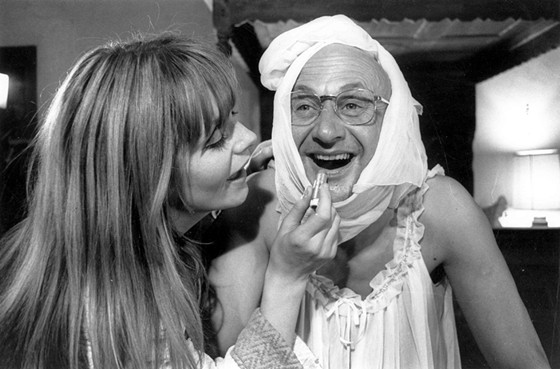
Some films just plain live in the shadow of other films created by their makers. 1942’s The Magnificent Ambersons will always be that tragic film Orson Welles made after Citizen Kane (1941). Jackie Brown (1997) will forever be the film Quentin Tarantino made after Pulp Fiction (1994), which nobody expected.
The film now under discussion, Cul-de-Sac, will always be paired with its immediate predecessor in its maker’s cannon, 1965’s Repulsion (and, also, to some degree, be the one of the films in-between that film and another of Roman Polanski’s greatest, 1968’s Rosemary’s Baby).
Though all the films mentioned could only be the work of one man, they are also each unique unto themselves and each deserves a chance based on its own merit. Cul-de-Sac is a challenge for some due to the fact that it’s meant to be a (very black) comedy. Not everyone gets Roman Polanski’s humor (to put it mildly).
Roman Polanski had been an extremely promising film student in his native Poland, producing some notable short films and then wowing, not only his native country, but critics and discerning film fans everywhere with his debut 1962’s Knife in the Water.
In the wake of that film’s success, he defected to England and eventually made the intense Repulsion, a big international hit. The follow-up, Cul-de-Sac, would be his second and last film in England before heading out for Hollywood (where, has surely all know, he found more success and catastrophe than he could have imagined).
Cul-de-Sac is set on the bleak northern coast of England (the north part of England gets a hard time in the movies). Early one morning a disabled car is being pushed along a causeway by a bearish middle aged man with another, much more slight, man in the car. It turns out that the men are Dickey (long blacklisted US actor Lionel Stander, making a come-back) and Albie (Jack McGowran) and they are gangsters fleeing a bungled job that has left Albie quite seriously wounded.
They also don’t know that they are going towards an almost deserted little island during the one time of the day one can drive there before the tide covers the way. Once there, they happen upon what can only be called a bizarre situation.
There is a castle on the island in which dwells an odd, neurotic and pretty effeminate man named George (Donald Pleasence) and his beautiful, much younger French wife, Teresa (Francoise Dorleau, who happened to be the sister of Repulsion star Catherine Deneuve).
From observation, Dickey sees that Teresa is carrying on sexually with the young man next door and others. That may be for the best since George seems more interested in her make-up and nightgown than her. Dickey cuts the telephone wires, planning to take the two hostage, but things don’t at all play out as he plans.
Though Polanski was never one to make the same film over and over, there are motifs and themes that run throughout his work and Cul-de-Sac shares in those. Polanski always finds the places where his characters dwell to be threatening. Here, the castle certainly fits into that mold. Secondly, characters are never really safe within their own homes. Again, there’s a match.
Also, there are those in the mainstream of society and those on the fringes and one group surely threatens another (a jackpot load here). The big difference here, as opposed to Rosemary’s Baby or 1974’s The Tenant, is that Polanski is playing for what passes for him as laughs.
The end effect of the plot machinations won’t be as lethal as in those films (though a fair numbers of characters do end up being disposed of). However, the sense of nagging claustrophobic fear that Polanski so often invokes so well is present well, though it does seem a bit odd in a lighter work. However, this is a fascinating, one of a kind, sort of film and worthy being judged on its own strengths.
8. Chimes at Midnight (1966, Orson Welles)
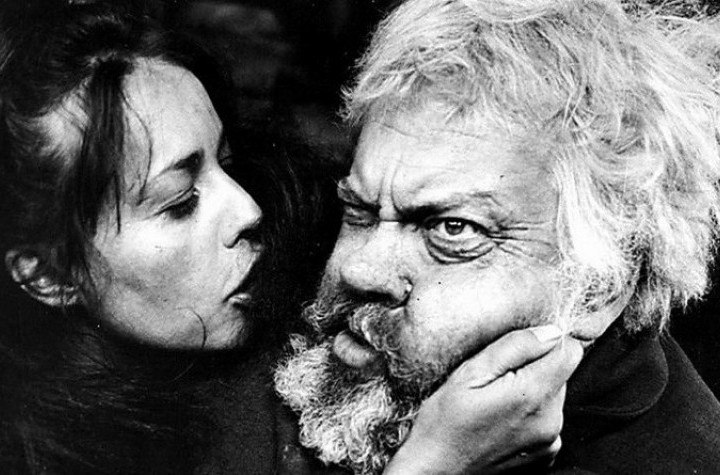
To be fully truthful, saying that The Magnificent Ambersons lives in the shadow of Citizen Kane as far as Orson Welles career goes, is a big understatement of facts. The cinematic world seems to be divided into two Welles camps: those for whom every frame of film he ever made should be enshrined in some golden vault and those for whom he made Kane and then everything else and only Kane was worth remembering. As usual, the truth lies somewhere in-between. Was everything Welles shot great? No, not quite. Was Kane the only worthy film he ever made? No, not at all.
It is true that after Kane, things started to become progressively tough for the film maker. By the end of the 1940s he had washed out of Hollywood (but, then again, so had the genius comic film maker Preston Struges and, unlike Welles, he never could recover at all from it).
Welles did work best with the resources of a Hollywood studio at his command (and all the ones he worked for were smaller, at least at them time he worked in those locations). However, one thing independent production in Europe mostly assured him was that he would control the editing of his films (though even that wouldn’t always be the case).
After he left Hollywood he started many films, most of them adaptations of works in the public domain (only 1955’s Mr. Arkardin was an original, though many thought it cribbed from Kane). Two of the ones he managed to complete were adaptations of works by Shakespeare, an artist whose presence ran the length of Welles own career.
It took him three years, lots of skullduggery and multiple changes of cast and crew to film 1952’s Othello (though it actually was shot over a number of days that added up to three weeks). His next successful attempt to film Shakespeare didn’t hit theaters until 1966 but, like pretty much every Welles project, it had a long history.
From his earliest days in the theater, Welles had been known for his innovative stage productions of Shakespeare’s works. One production he kept trying to get off the ground was a composite editing of the Bard’s historical plays he entitled Five Kings.
Though he never seemed to get any farther than university or regional theaters with it, the receptions to the productions weren’t good. In the mid-1960s he decided to try again but, this time, narrow the focus to the fictitious character of Falstaff, a role the later day Welles was born to inhabit.
He used the two parts of Henry IV as his main text with bits and pieces from Henry V, Richard II and lines from The Merry Wives of Windsor, along with passages from the noted historical text Hollingshead’s Chronicles to help stitch it all together.
He fooled a European producer into thinking he was about to make Treasure Island (which he did want to make one day with himself as Long John Silver, though that was never to be) in order to get start up money.
Though the action is set in Olde England, Spain in the fall and early winter would have to do for locations (and he was good and bending places such as an old Spanish garage into proper locations). Though he couldn’t really afford big names, several friends from the acting world agreed to waive their salaries in order to work on a Welles films. These names included Sir John Gielgud, Jeanne Moreau, Margaret Rutherford, and Fernando Rey.
Sadly, though, the film ran into post-production budgetary problems. The film couldn’t then be processed to achieve the ancient engraving look Welles wanted and a mistake the lab made, but wouldn’t correct, caused the sound in the early reels to be slightly out of sync.
Though the film won two awards at the 1966 Cannes Film Festival, many critics slammed it, mostly due to it not looking or sounding right (chief among them the New York Times’ sacred monster Bosley Crowther, who met his Waterloo the next year over his review of Bonnie and Clyde).
Making matters worse, as is often the case with Welles later work, legal rights to the film were left wildly up in the air for many years, making it almost impossible to see this somewhat misbegotten epic. Thankfully, everyone decided to be sensible and agree and the US video company Criterion unveiled an elaborate restoration/refurbishment of the film in 2016.
Finally Chimes at Midnight looked and sounded as Welles had intended and what may well be his greatest acting performance and his unforgettable battle scenes, among many other delights, were now clearly watchable. It’s only been a few years since that event and this film may be on its way to finding its rightful place in the cinematic sun. Here’s hoping.
9. The Swimmer (1968, Frank Perry & Sydney Pollack)
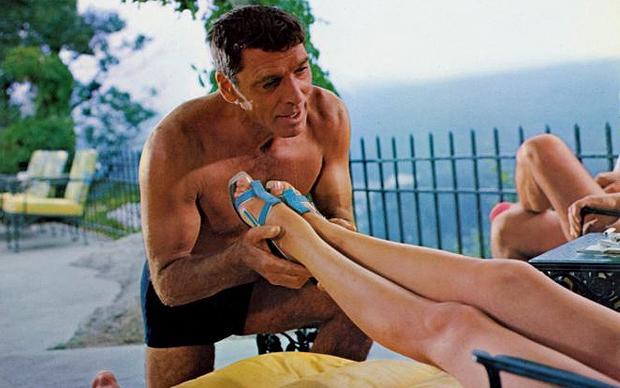
Many films get made easily and turn out to good or bad or hit or miss. There are also films that have the hardest of labors. 1963’s Cleopatra did and everyone felt it wasn’t worth the trouble. 1997’s Titanic also did and, at the very least, those who created it very much felt it worth the trouble.
However, troubled productions and post-productions are usually not a good sign. Commercially, Columbia Pictures probably thought The Swimmer was one that studio could do without. Artistically, the film is another story.
The Swimmer is taken from a story by noted US writer John Cheever, who is best remembered for his short pieces. Few of his works have ever made to film and the majority of those for television.
The Swimmer may be the film that scared everyone else off. Adapting the story was the idea of the husband and wife team of Frank and Eleanor Perry. They were an unusual couple in that Mr. Perry had met the much older Mrs. Perry when he was college student of her first husband. She was already an established writer (though not in films or the dramatic arts) when they married. They were determined to make films their way and to stay in their beloved New York area.
In 1962, after only two years of marriage, they created the low budget but much acclaimed study of juvenile mental illness, David and Lisa, which earned Mr. Perry a surprise Oscar nomination and seemed to get the pair on their way. Unfortunately, their follow-up, 1964’s Ladybug, Ladybug, which was an interesting, if flawed film, went virtually unseen.
More happily, they reached their widest audience ever with two short made for TV adaptations of Truman Capote stories, A Christmas Memory (1966) and The Thanksgiving Visitor (1967), which drew much acclaim and an Emmy for the first film for Mrs. Perry. By now they had realized that for a film to be seen in the US, a major studio or distributor had to be involved. Therefore, their parlayed their TV success into pitching a project to Columbia, namely The Swimmer.
The Swimmer, like many Cheever stories, is set in the privileged suburbs of upstate New York, a commuter train ride from the big city. Not only is it set in a privileged place but at a privileged time of the week, namely a Sunday afternoon deep in spring or early summer.
A robust mature man named Ned Merrill (Burt Lancaster, in one of his best performances) appears out of almost nowhere and drives into a lush suburban swimming pool. The pool belongs to friends who are glad and surprised to see him and comment on a lengthy absence he doesn’t acknowledge.
During the group discussion, where, even at this stage something seems amiss, he announces that he has realized that the many pools of the town form “a river” that leads to his home and he intends to swim it that very day.
The others think that he’s joking or that something might be wrong with him but he’s off before they can take the conversation too far. Each stop at each pool will slowly reveal that things are far from right in Ned’s life and haven’t been for a long, long time. The final destination proves to be shattering.
Obviously, this story isn’t an upper. Also, it deals with a group of people many might find unsympathetic (few enjoy watching the privileged enjoying their privileges). However, this film is quite well written and adroitly directed. In all honesty, what the Perry’s may have pitched to the studio couldn’t be much different than what was delivered.
Still, Columbia tinkered with it for the better part of two years. The most noticeable change was made in a big scene near the end when Ned needs to swim in the pool of a bitter old flame he had romanced and deserted. The role was originally shot with stage actress Barbara Loden (who had one luckless life and career) playing the woman.
Columbia vehemently objected to her and had the scene reshot, over a year later, in California with former stage actress Janice Rule, who had to be given special billing, now playing the woman. Sharp eyes can see that Lancaster looks a bit older in this scene (and not as tan as in the other scenes) and that the scenery no longer looks like the countryside of upstate New York (actually filming was done mainly in Connecticut) .
Even after all of that, the studio more or less let the film escape, rather than releasing it. It did no business and was next seen on the CBS TV network late movie. That is a shame for the film is very literate and well developed and Lancaster, one of the few big stars who regularly took chances, and a cast of New York based actors (Kim Hunter, Dolph Sweet, Cornelia Otis Skinner, and even Joan Rivers) do stand-out work.
The Perry’s may have struck out here commercially here but had hits with 1969’s Last Summer (released by Allied Artists) and 1970’s The Diary of a Mad Housewife (distributed by Universal, finally a big studio!) but ran aground with 1972’s Play It As It Lays and ended up divorcing.
Mrs. Perry, who only lived ten years thereafter, showed she could make it on her own, though not in the movies, winning another Emmy for the wonderful seasonal film The House Without a Christmas Tree (1973).
Mr Perry went Hollywood and wasn’t so lucky, racking up two more marriages and such reviled films as 1982’s Monsignor and, especially, 1981’s notorious camp classic Mommie Dearest. Despite those later misadventures, his early work still commands respect and The Swimmer is prime among those.
10. The Story of Adele H. (1975, Francoise Truffaut)
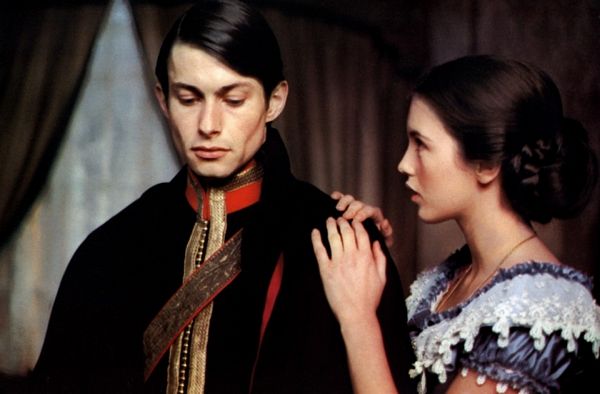
French critic turned great film maker Francoise Truffaut loved film and he packed a lot of watching, writing and film making into a sadly few (52) years. It is undoubted that, as long as celluloid continues to unreel (or some updated equivalent thereof) that his films such as 1959’s The 400 Blows, 1960s Jules and Jim, and 1973’s Day for Night will be seen and remembered.
However, he made a number of films which weren’t that widely viewed or known in either their own time or since. One which did attract some attention, if not complete critical acclaim at the time, was The Story of Adele H., a film which should get more notice and respect.
There are a few notable traits concerning this film that make if unusual in the Truffaut cannon. The first is that it is based on a true historical personage (the only other Truffaut film of which this is true is 1970’s The Wild Child).
Though the title character herself is not well known, Adele was the daughter of the great French author Victor Hugo (a fact that has considerable bearing on the film’s story). Adele, though quite young, suffers from a mental imbalance which causes her to both embrace and reject her renowned father (who never appears onscreen) while obsessively pursuing a rather unworthy and disinterested young military officer (Bruce Robinson)literally halfway around the globe and crushing both of their lives (hers in particular) in the process.
Secondly, this may be the director’s only non-autobiographical work on focus on only one person (and even some of his autobiographical films are relationship oriented, not singular in focus). Some were dismayed at this, since the film, to those viewers at any rate, seems almost as obsessive as Adele herself.
This view misses a few things. First of all, the closing frames of the film tell the viewer that, although Adele’s voyage and pursuit ends in calamity, she was strangely brave to have gone off on her own, for the only time in her life, in a time not hospitable to women alone, and pursued her goals to an end.
Also, and even the nay-sayers recognize this, Isabelle Adjani, then only 20 years old and embarking on one of the great careers in French film history, gives one of the best performances ever to grace a Truffaut film (and she is the recipient of the only acting Oscar nomination ever given to a Truffaut film for this work and was the youngest Best Actress nominee ever, at the time).
Those who were dismayed that the film maker didn’t employ his usual bag of cinematic tricks (and he was very cine-literate) failed to see that he knew that Adele and the actress playing her were the whole show and builds it all around her and he should have. Sadly, this wasn’t a big hit even in France. However, much time has passed (and Adjani has proven to be a worthy muse) so maybe it’s time to look again and see the fullness of this particular glass.